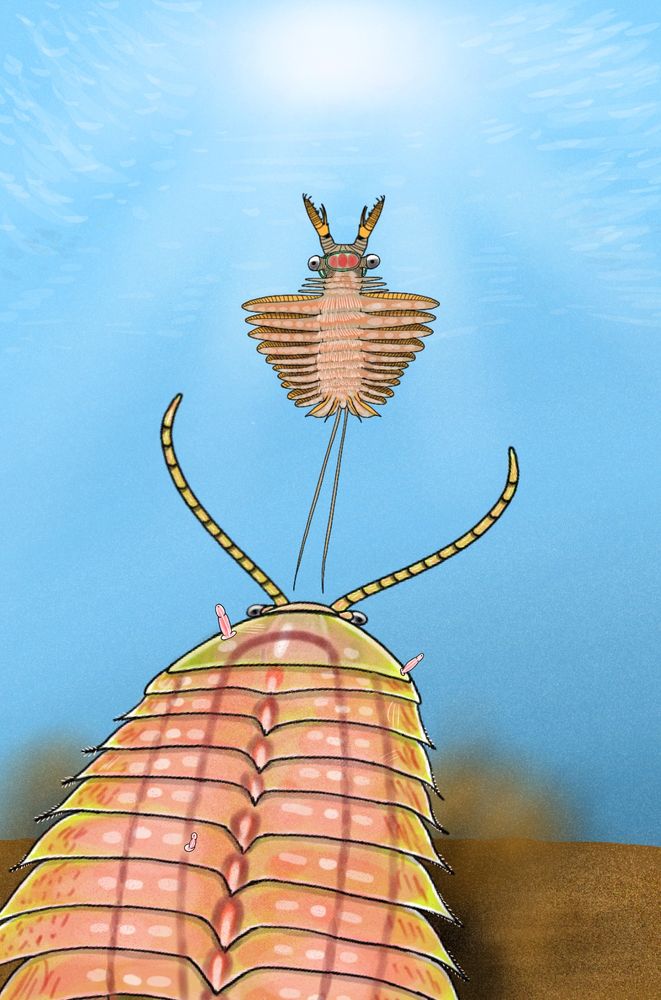
Definitely Dragonympha, the larval specimen of a meganisopteran insect (griffinfly) from the Mazon creek Fossil Beds.
19.06.2025 16:23 — 👍 3 🔁 1 💬 1 📌 0@fossilsdder13.bsky.social
Frequent arthropod paleo-artist, and Paleozoic enthusiast.

Definitely Dragonympha, the larval specimen of a meganisopteran insect (griffinfly) from the Mazon creek Fossil Beds.
19.06.2025 16:23 — 👍 3 🔁 1 💬 1 📌 0
Yawunik kootenayi, the sea monster of kootenay, a megacheiran arthropod from the Marble canyon locality of the Burgess Shale
#paleoart
#paleontology
#cambrian

In the middle Cambrian of China, a young Amplectobelua narrowly escapes a Tauricornicaris (here restored as a Fuxianhuiid).
#paleoart
#paleontology
#cambrian

Falcatus belongs to a family of chondrichthyans known as the Falcatidae, which were distantly related to modern chimaeras. They are well known for their dimorphism, where the males possessed elaborate, horn-like fin spines. Typhloesus on the other hand is a bizarre invertebrate that was first described in the 1970s. Originally nicknamed the “Alien Goldfish” this organisms taxonomy was (and to extent still is) uncertain. More recently it has been proposed to be a pelagic mollusk distantly related to modern gastropods.
In the moonlit waters of central Montana, during the lower Carboniferous, A male Falcatus attempts to hunt a Typhloesus
#paleoart
#paleontology
#carboniferous

So this fish is known specifically from the Kinney brick quarry, a site which has yielded a plethora of Carboniferous fossils. Some contemporary fauna included the large ctenacanth Dracopristis.
Recon of Don Juan (yes that’s actually its nickname) a currently unnamed holocephalan fish from the upper Carboniferous of New Mexico.
#paleoart
#paleontology

Mobulavermis is a recently described genus of Kerygmachelid Lobopodian. The Kerygmachelids are often placed within the “gilled lobopodians” (lobopodians with lateral flaps that were able to swim). This term excludes certain other groups like the radiodonts due to their more derived traits. Mobulavermis lived in the pioche shale of Nevada, which dates to the middle-late Cambrian.
In the shallow seas of Nevada, around 514 million years ago, a Mobulavermis attempts to attack a Perspicaris.
#paleoart
#paleontology
#cambrian

Clausocaris

Odaraia

Herpetogaster

Tulip Beds site (Burgess shale)
So I guess I here as well from Twitter
Here’s some of my recent paleoart in a sort of “portfolio” style
#paleontology
#paleoart
#invertebrates